A properly maintained backyard pond can add incredible beauty, biodiversity, and ecological balance to your garden. These little bodies of water transform a simple landscape into a waterside oasis that can host a diversity of plants, fish, and beneficial insects.
However, invasive pond weeds can quickly become a major impediment to the aesthetic and ecological functioning of your yard. These aggressive, non-native species choke out the healthy, desired species while harming the aesthetics, water quality, and fish populations.
Use this guide to identify and remove seven of the most common invasive pond weeds.
7 Invasive Pond Weeds to Remove Now
Maintenance is the key difference between a slimy green pond and a beautiful clear one. Overgrowths of algae and invasive species can rapidly suck up all the oxygen and nutrients from the pond water, causing ugly water color, dead fish, and potentially foul smells. Needless to say, identifying and removing these invaders is key to maintaining a healthy, thriving pond ecosystem.
Cattail (Typha angustifolia)
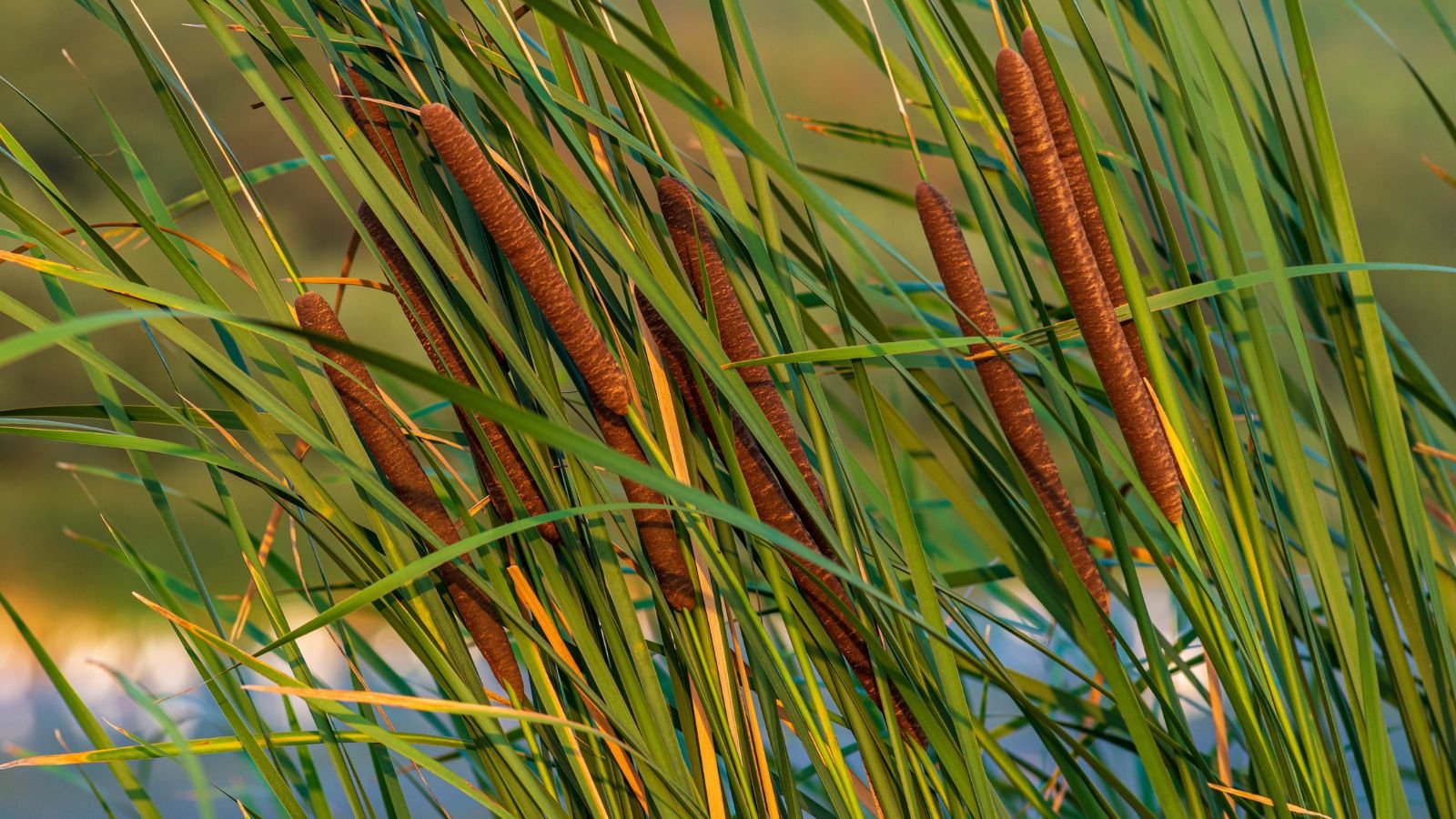

Cattails are iconic pond plants that aren’t necessarily invasive weeds. Many native wetland species, such as Typha latifolia, are indigenous to North America, but invasive cattails like narrow-leaved cattail (Typha angustifolia) and hybrid cattails (Typha x glauca) can cause some major problems. The narrow-leaved and hybrid types are difficult to distinguish, but if you have an overgrowth of cattails, it’s safe to assume they need to be cut back or removed.
While the native species can spread into thick, undesirable stands, the invasive species will straight up take over a pond and even spread into neighboring wetlands. Narrow-leaved cattail mostly spreads via its seeds, while the hybrid species uses aggressive underground roots to multiply.
Experts recommend the “cut and flood” removal method if you want to get rid of these aquatic plants without chemicals. In late winter or early spring, begin at the edge of your pond with a large weed whacker or motorized garden shears. Cut the cattails as low to the ground or water surface as possible. Then, turn on your hose and flood the area so the water can drown the cut stems. Alternatively, try hand-pulling or burning invasive cattails.
Hydrilla (Hydrilla verticillata)
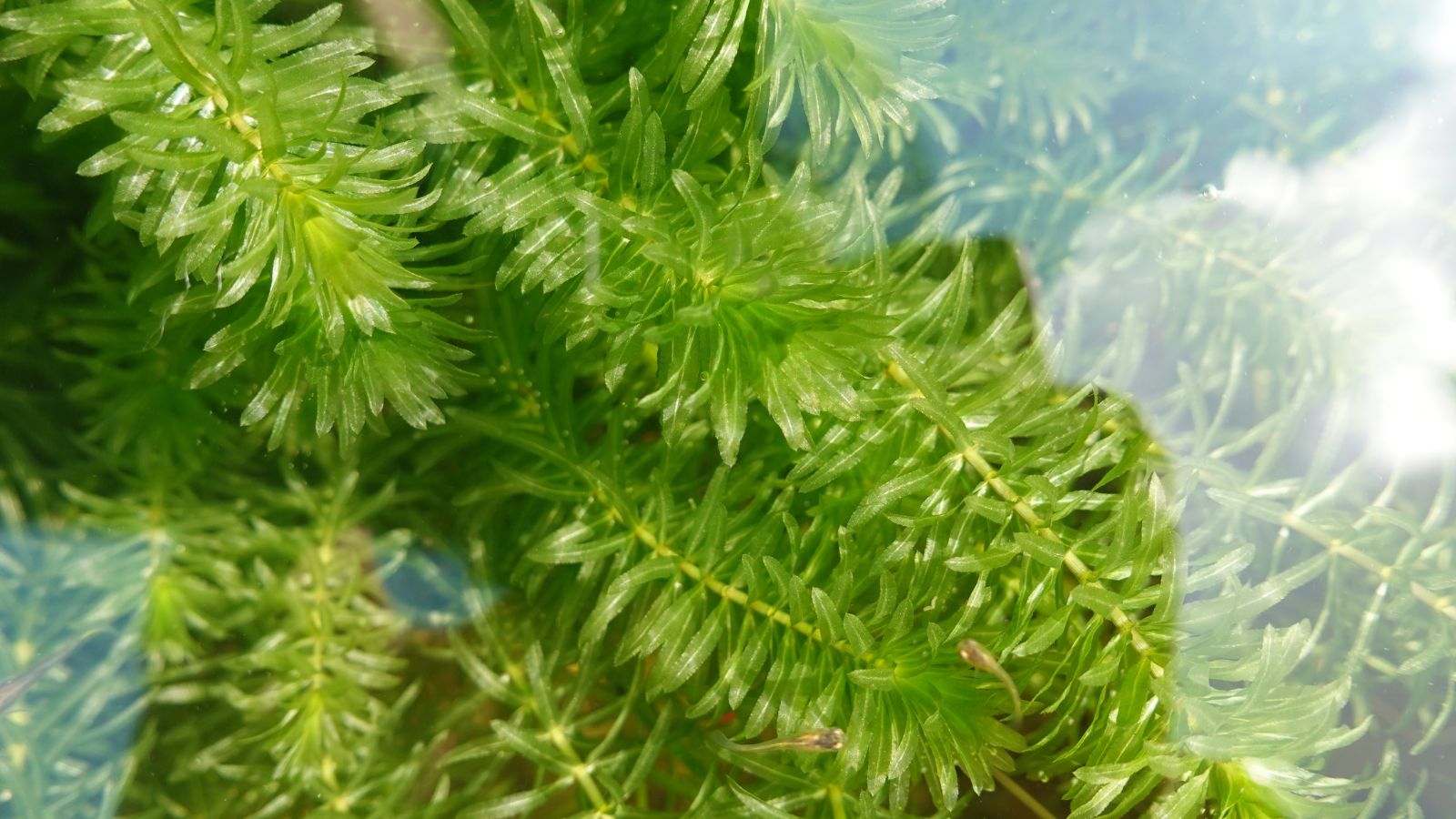

This annoying weed is uniquely difficult because it propagates via any fragment of root left in the water. Hydrilla uses a lot of oxygen to grow and chokes out beneficial pond species by forming a thick mat on the water surface. You’ll easily recognize it by its thread-like, deep green strands up to 25 feet long. The leaves whorl around each stem and weave together atop bodies of water.
Hydrilla infestations are a major nuisance for the aesthetics, property value, fish habitat, and ecological function of your pond. Professionals suggest using specialized mechanical removal devices like a lake mower or aquatic weed rake to cut back dense stands, then grab a large sieve or net to remove as many cut fragments as possible.
For a biological control option, try stocking your pond with a triploid grass carp that feeds on the hydrilla vegetation. There are also EPA-approved aquatic herbicides that target the roots, but they can still be dangerous for both your pond and garden ecosystem, as well as human health. The best means of control is prevention through regular pond cleaning, aeration (circulation of water with a pump), and beneficial pond plants.
Eurasian Watermilfoil (Myriophyllum spicatum)
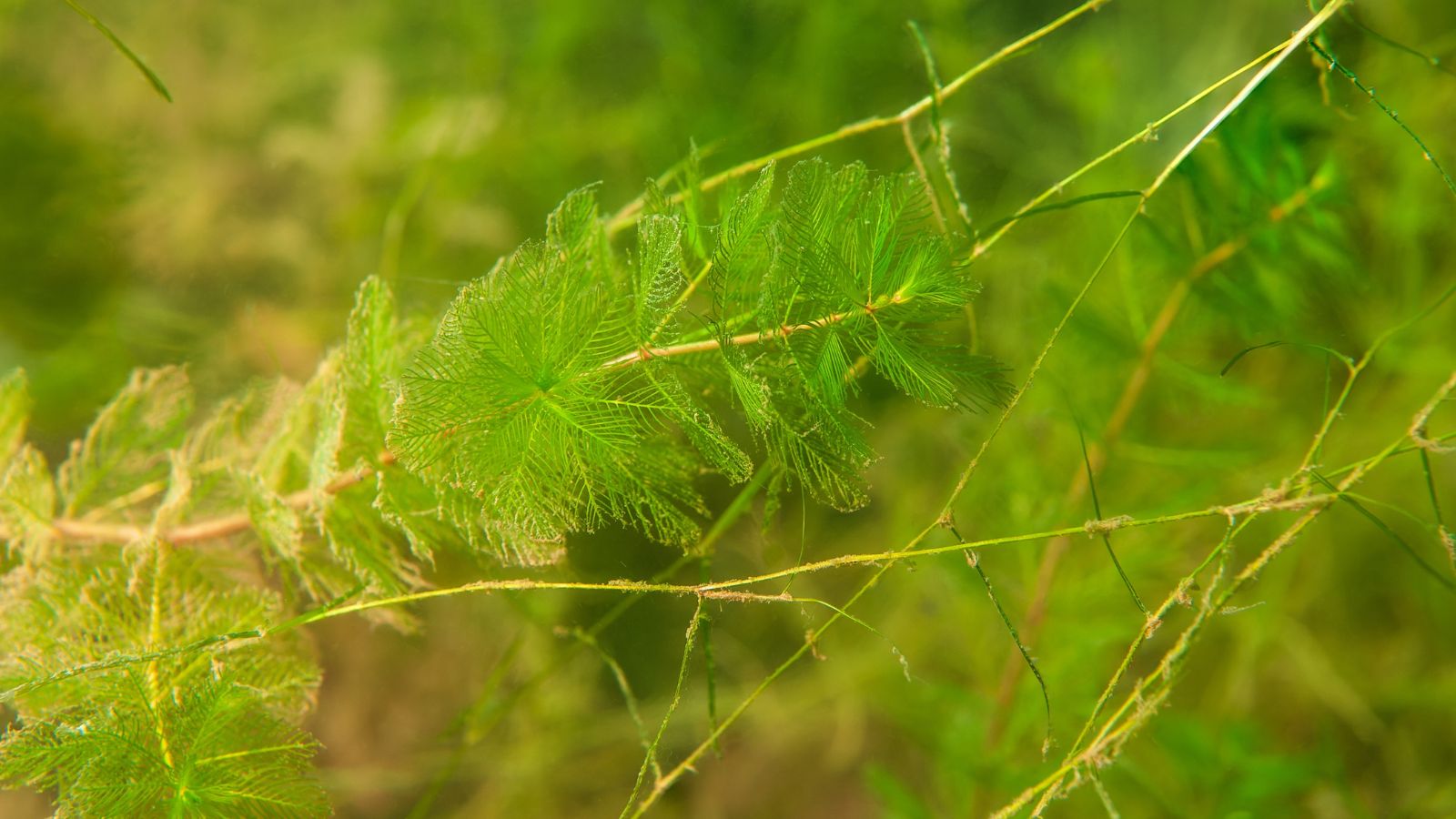

This feathery green plant looks like a delicate aquatic fern, but it can quickly form thick mats right under the water surface. The overgrowth reduces water clarity, interferes with boating or canoeing, and is very unpleasant to swim through. Eurasian watermilfoil also reduces sunlight penetration in the water, which reduces oxygen levels for fish and other plants.
Unfortunately, this invasive pond weed has a remarkable ability to overwinter as an evergreen in many areas, such as the Pacific Northwest and parts of the East Coast. Instead of dying back to the crowns in the fall, Eurasian watermilfoil continues growing throughout the cold weather, maintaining even more biomass that harms your pond.
Hand-pulling, raking, and mechanical harvesters are the most common means of removal. You can also try a benthic barrier, which is similar to a tarp, that prevents sunshine from reaching the aquatic weeds, thus smothering them. Some pond-owners use herbicides, but they can pose many risks to fish, insects, and other plants. Milfoil weevils are a biological control option that is currently being researched.
Water Hyacinth (Eichhornia crassipes)


This noxious aquatic weed happens to be incredibly gorgeous. But don’t let the pretty purple flowers fool you—it is one of the fastest-growing aquatic plants that can double its population in just two weeks! That means just 10 water hyacinth plants in your pond can easily become 600 plants within a few months. You want to catch this South American species early to prevent seed and root propagation.
Small infestations are easy to remove by hand via pulling or cutting. Use thick trash bags to dispose of them in the trash rather than composting. You don’t want the hyacinth to find its way back into your garden or local wetlands. Ideally, remove before the pretty flowers appear to prevent any spread by seed.
There are some biological control weevil options, namely Neochetina eichhorniae, which can be sourced from aquatic pond supply stores. Some homeowners opt for herbicides, but this can severely damage your pond ecosystem and water quality, making way for other invasive species.
Duckweed (Lemna minor)
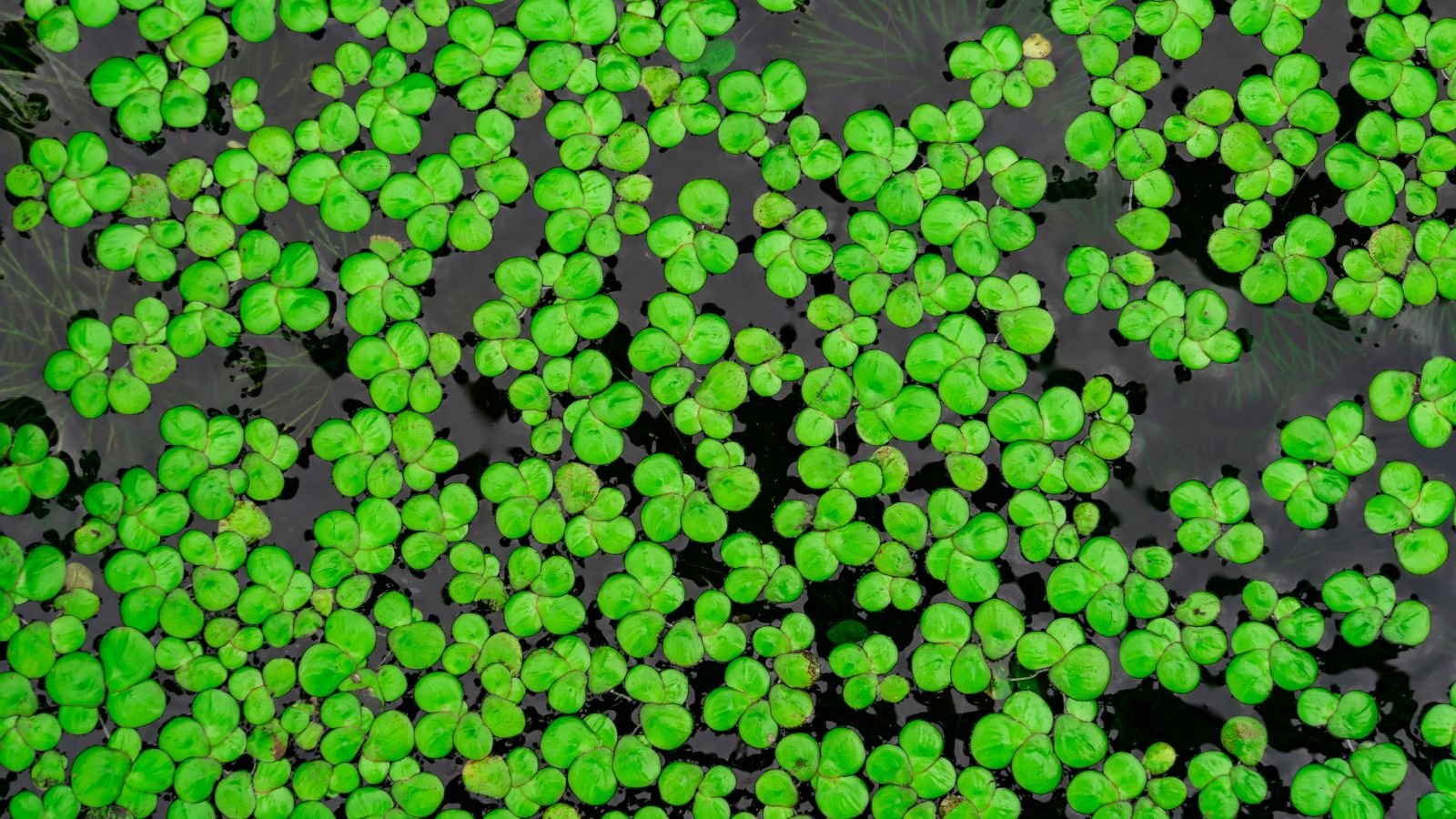

This freshwater weed often grows alongside watermeal (Wolffia spp.). It is easily recognized by its teeny tiny leaves, less than ¼ inch long. The tiny plants are among the smallest flowering plant species known, but the flowers are microscopic.
The minuscule green leaves gather in massive quantities and float along the surface of still water, especially ponds and marshes. They quickly reproduce via chains of new stems that asexually propagate and overtake small waterways. To make matters worse, they often have specialized buds that break off and sink to the bottom of the pond to overwinter, ensuring they can return next year.
Break this life cycle by first skimming or scooping the surface of your infested pond with a specialized rake or net. If you don’t already have koi fish or goldfish, it may be time to introduce them, as they rapidly munch up the tiny leaves as well! Smaller pond owners may opt for a wet/dry vacuum to suck up the annoying carpet of vegetation. Adding an aeration pump is another quick way to disrupt this plant and prevent its return.
Parrot’s Feather (Myriophyllum aquaticum)
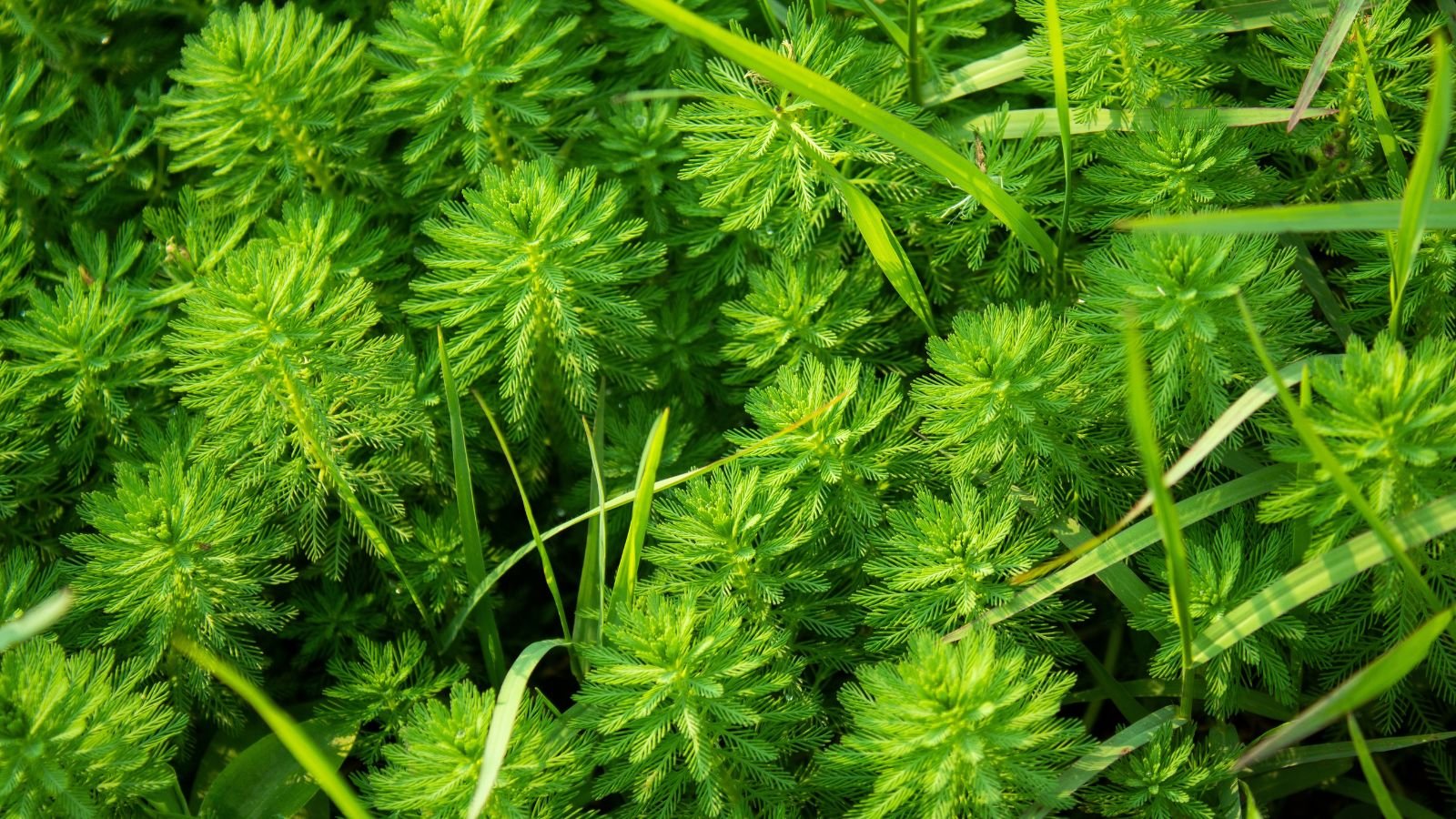

This invasive pond weed originates in South America and is often sold for aquariums. Unfortunately, it has escaped to ponds, lakes, and marshes. It rapidly overgrows native aquatic plants, clogs drainage, and hosts mosquito larvae. If you’re trying to cut back on mosquito-nesting areas in your landscape, this is definitely a plant to get rid of ASAP!
Parrot’s feather can be identified by its whorls of leaves that almost remind you of pine needles. The long stems float above the surface and are often confused with Eurasian watermilfoil because of their feathery appearance.
If the plant is just getting established, you can usually rip it out by hand or remove with a pond rake. But if it has already taken over, your best bet is to drain the pond, remove all visible vegetation, and start over with a water pump that keeps water aerated and moving at all times.
Alligator Weed (Alternanthera philoxeroides)
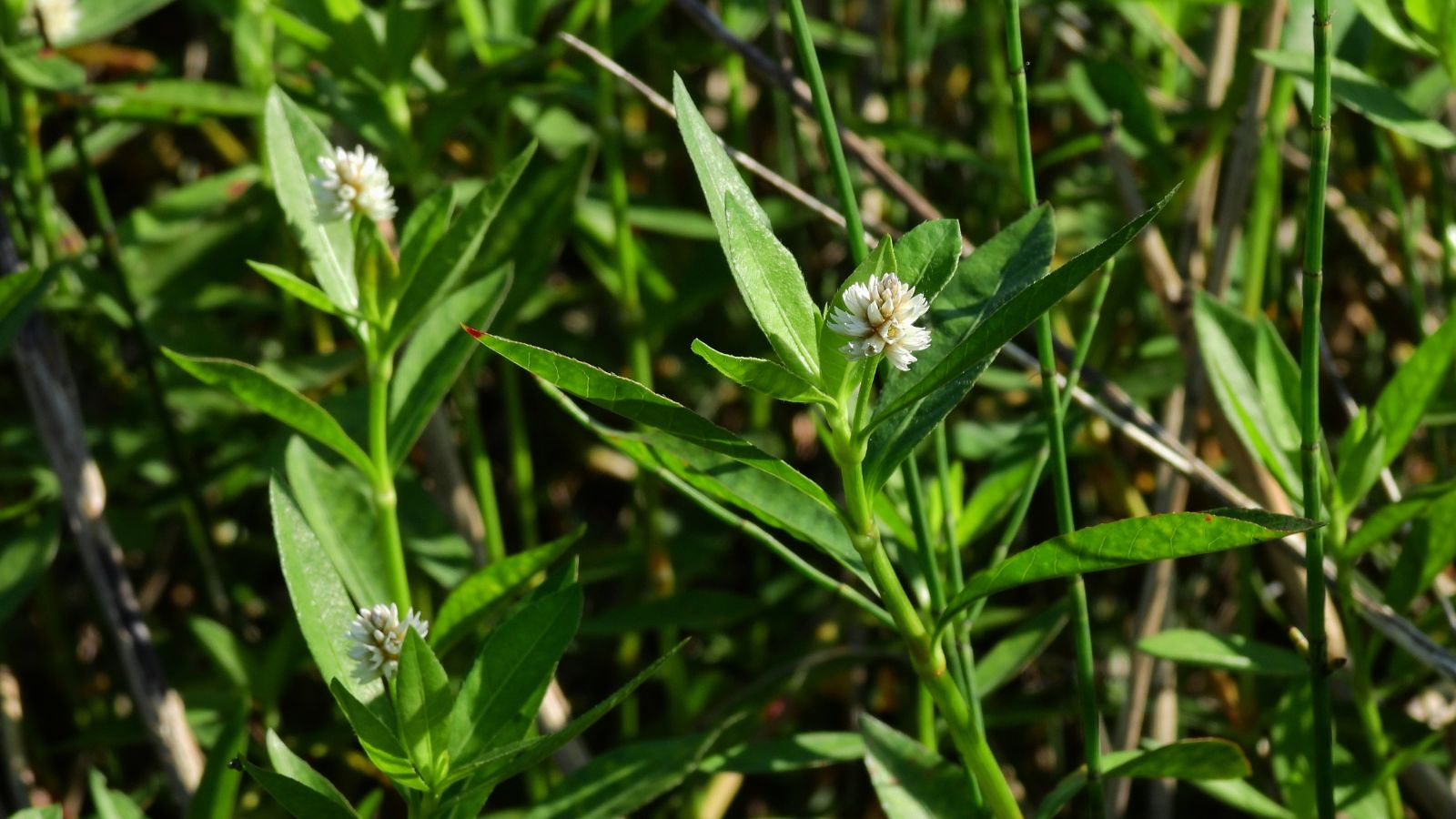

This is one more South American weed that has invaded North American waterways and may reside in your pond. It spreads rapidly and reduces oxygen levels in the water. It also clogs up ponds, making it difficult to enjoy their beauty or support swimming fish. The stem fragments spread easily, so it’s important to be vigilant in your removal efforts.
Physical removal is usually unreliable because alligator weed will spring up again from any little piece left behind. Many homeworners have found success with alligator weed flea beetles (not to be confused with brassica flea beetles), but these biocontrol agents can be difficult to find. Alligator weed thrips and stem borers are other pests that eat this plant without attacking others.
Herbicides are sometimes used, but they can destroy all other life in your pond. You can also drain your pond low and use livestock like goats to graze down the vegetation.


